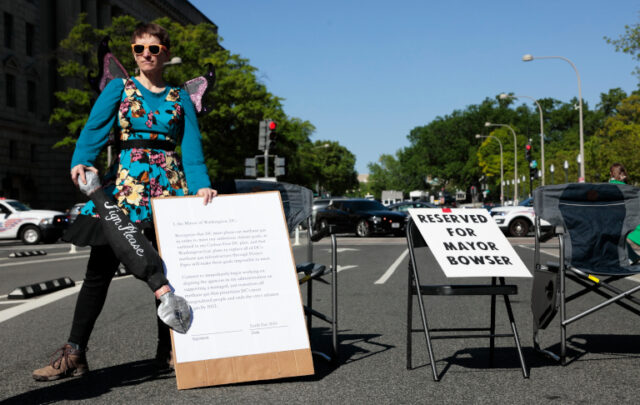The environmental problems we face are deep rooted and widespread. They can be solved only by a full national effort embracing not only sound, coordinated planning, but also an effective follow-through that reaches into every community in the land. Improving our surroundings is necessarily the business of us all.— Richard Nixon, 1970
I admit the title of this piece sounds a bit like a Comic-con promo for a new graphic novel. The story does contain all the requisite elements– heroes, villains, intrigue, punches and counter-punches. True to the genre it has no foreseeable ending; only the promise of more stories to follow.
Trump’s environmental assault raises questions—as well as eyebrows—about the legacy of Republican presidents in the modern era[i]. For example, is The Donald’s denial of climate change theory an historically Republican phenomenon or is it more personal to whoever is sitting in the presidential chair?
Similarly, is refusal to take the steps necessary to protect people and nature from harmful emissions and transition the nation to a low-carbon economy a function of traditional Republican dislike of regulation or something more specific?
I thought to do a bit of research on the subject. The following is a tale of the tapes.
The Trickster
For a man who once said environmentalists wanted to live like a bunch of damned animals, Nixon did a lot to protect their habitats and to keep them safe even today.
The Trickster’s environmental legacy is impressive. It includes:
- National Environmental Policy Act of 1969 (NEPA/est. Council on Environmental Quality)
The Act, for the first time, formally created a national policy framework and established actual goals. The preamble to NEPA reads:
To declare [sic] national policy which will encourage productive and enjoyable harmony between man and his environment; to promote efforts which will prevent or eliminate damage to the environment and biosphere and stimulate the health and welfare of man; to enrich the understanding of the ecological systems and natural resources important to the Nation; and to establish a Council on Environmental Quality (CEQ).
President Nixon spoke of the reason CEQ was established in his 1970 Special Message to the Congress on Environmental Quality:
This Council will be the keeper of our environmental conscience, and a goad to our ingenuity; beyond this, it will have responsibility for ensuring that all our programs and actions are undertaken with a careful respect for the needs of environmental quality. (emphasis mine)
- Created the EPA (1970)
- Clean Air Act Extension of 1970 (CAA)
CAA remains today as the cornerstone of federal responsibility to regulate greenhouse gas (GHG) emissions.
- Marine Mammal Protection Act of 1972 (MMPA)
- Marine Protection, Research and Sanctuaries Act of 1972 (MPRSA)
These Acts were the first to: protect marine mammals, e.g. dolphins, whales, seals, polar bears, et. al.; regulate ocean dumping; establish guidelines for public display of captured marine mammals; and, allow indigenous Alaskan people to engage in subsistence hunting.
- Safe Drinking Water Act of 1974 (SDWA)
The Act was proposed by Nixon and passed by Congress in 1974 but signed by President Gerald Ford. This 1974 law was enacted after scientists discovered widespread contamination in American tap water.
The law protects the nation’s lakes, streams, rivers and wetlands. It is the foundation of the Waters of the U.S. rule (WOTUS) drafted during the Obama administration.
- Endangered Species Act of 1973
President Nixon called upon the 93rd Congress to enact comprehensive endangered species legislation. Congress, working with a team of lawyers, scientists and the first head of the Council of Environmental Quality, Russell Train, drafted and enacted this landmark legislation. It has been called the Magna Carta of the environmental movement.
The Trumpster’s likely legacy promises to be a bit less impressive based on his performance to date:
- National Environmental Policy Act of 1969 (Council on Environmental Quality 2017)
Trump and company moved CEQ out of the Jackson Place townhouse that was home for nearly 50 years. The eviction is consistent with the administration’s attitude towards the Council in general, considering it also shut down its website and has failed to nominate anyone to be its director.
Trump also issued an executive order just days after being sworn in that rather radically changed CEQ’s function in the federal scheme of things. It is now expected to assist the administration to expedite federal infrastructure decisions.
Why? The Donald believes it important to assist oil and gas companies, e.g. the Dakota Access and Keystone XL pipelines to cut through the incredibly cumbersome, long, horrible permitting process.
- The EPA (2017)
Trump’s appointment of Scott Pruitt as EPA Administrator and his proposed cuts of more than a third of the FY 2018 Agency budget pretty much says it all. Not quite all, but enough to get the idea that if he had his way, this part of the Nixon legacy would be forever forgotten.
- Clean Air Act Extension of 1970 (CAA)
Nearly every executive action taken by The Trumpster and several of those taken by the Republican majorities in Congress have been an assault on the CAA in one form or another. The attack started just days into the new year when members of Congress started introducing a series of joint resolutions, pursuant to the Congressional Review Act (CRA), to prevent Obama-era regulations from going into effect.
Hostilities are continuing through a host of executive orders to review, revise and possibly rescind many more rules, e.g. methane emissions from oil and gas drilling operations, smog, ozone, et. al.
- Marine Mammal Protection Act of 1972 (MMPA)
- Marine Protection, Research and Sanctuaries Act of 1972 (MPRSA)
The Trump administration announced in June it was cancelling the proposed rule limiting the number of endangered whales, dolphins and sea turtles that could be killed or injured by sword-fishing nets on the West Coast.
- Endangered Species Act of 1973
June 2017 was not a good month to be an endangered species in the Age of Trump. Not only had the administration cancelled the marine rule, but Interior Secretary Zinke announced he was ordering the review of an agreement reached by a broad coalition of interests to protect and conserve the sage grouse and its ecosystem.
According to Jacque Leslie: the agreement, which includes the largest voluntary wildlife conservation program in the nation’s history, embodies all the attributes of deal-making that politicians give lip service to but rarely embrace these days: bipartisanship, collaboration, inclusivity, transparency.
Perhaps the one law Trickster and Trumpster would have agreed to oppose is the Clean Water Act of 1972 (CWA). Despite having asked Congress to draft the SDWA and signing it into law, President Nixon vetoed the CWA.
Nixon opposed the legislation on the basis of what he called a staggering budget wrecking [price tag] of $24 billion–not an insignificant amount of money in 1972 dollars. Congress overrode the veto in an historically interesting vote, from which 36 senators and 160 Representatives refrained.
CWA is the authority under which the Obama administration drafted the much fought over Waters of the U.S. rule (WOTUS). CWA is also the authority under which that administration drafted the rule limiting the amount of toxic pollution power plant operators can discharge into streams, rivers and lakes. Both rules are in jeopardy; neither has yet come into force.
Whether The Trickster and The Trumpster would see eye-to-eye today on the CWA is a matter of speculation. Times have changed and so has the willingness of the political parties to work together.
Gerald Ford
Following Nixon’s departure from office, Gerald Ford moved from his position as the unelected Vice-President to become the unelected 38th President of the United States. Ford’s environmental record stands basically on his having signed the legislation establishing the nation’s first fuel efficiency standard for passenger vehicles and increasing funding for water treatment facilities through the Safe Drinking Water Act (SDWA).
Unlike his predecessor, Ford didn’t exhibit any particular passion for environmental protection. The oil price shocks of the early 1970s paved the way for the auto fuel efficiency standards. His willingness to regulate did not extend to the coal industry. Ford vetoed Congressional efforts to restrict mountaintop strip-mining.
The man from Georgia—a brief word
I have brought President Carter into the story to help set the scene for what followed. Carter surely ranks high on the list of Greenest Presidents[i]. His environmental legacy, like that of his presidency, had much to do with Middle East unrest and the actions of Iran and Iraq.
Carter’s term in office coincided with decreased Middle East oil output due in part to the Iranian Revolution and an imbalance in global oil supplies. The long lines and rationing of gas, along with a more than doubling of the price of a barrel of oil, got the attention of voters and political leaders alike.
Carter was personally committed to environmental protection, however. According to Chris Peak:
A dedicated idealist, Carter pushed the Democratic-controlled Congress to support a seven-point plan in early 1977 until his last days in office in 1981. Raised on a farm, Carter traces some of his concern for stewardship back to his experiences with Georgia soil and Southern Baptist soul….
That’s why Carter installed solar panels atop the White House, pledged to lower the thermostat and wear sweaters instead and turned off the Christmas tree lights on the lawn.
Carter’s willingness to don sweaters and turn down thermostats ironically portrayed energy conservation in a very dim light. It became a visual very hard to live down by clean energy advocates—myself included.
It portrayed energy efficiency in chilling terms of sacrifice. A sacrifice many said was unnecessary in light of the subsequent evidence suggesting the long lines at gas stations were a function of bad planning not too little production. Global supplies dropped by only 4 percent or so during the crisis.
Panic, as much as anything, drove the doubling of prices. A series of settlements of overcharge cases brought against oil companies, in the early 1980s,for improper 1970s pricing practices, further supported the belief the crisis was more scandal than shortage. Ironically, the cases returned billions of dollars to the states for conservation and efficiency programs at a time when a new not-so environmentally friendly president was taking office.
The Gipper
Reagan’s environmental record in the eyes of environmentalists and clean energy advocates is substantially less than stellar. Again, according to Peak:
Reagan…took aim at [what he called] “literally thousands of unnecessary regulations” promulgated by the EPA. Immediately after his landslide victory in 1980, the Gipper slashed through Carter’s work.
The Gipper it might be said was more closely aligned in his thinking with The Trumpster than The Trickster. Reagan, like Trump, opposed environmental regulation on principle. He also understood the importance of symbolism and media gestures. One of his early acts upon moving in to the White House was having the solar panels Carter had installed removed.
Reagan’s greatest affinity with the Donald had to be the quality of some of his senior advisers. In a truly impressive piece of understatement, Eli Lehrer writing on Reagan’s legacy in Bill Kristol’s Weekly Standard:
His environmental appointees were also hit and miss, particularly the earlier ones. EPA administrator Anne Gorsuch mismanaged the agency.
Interior secretary James Watt turned out to be a political liability and ended up having to resign after noting in public that a coal-leasing panel was made up of “a black, a woman, two Jews, and a cripple.” (emphasis mine)
More miss than hit, I’d say. Although a notable exception, discussed a bit further on, was George Shultz, who succeeded Alexander Haig as Secretary of State.
The Gipper’s appointments must make The Trumpster proud. As fate would have it, the Supreme Court Justice Gorsuch is the spawn of Reagan’s first EPA Administrator.
Once more turning to Peak:
Anne Gorsuch, promised “to get out better environmental results with fewer people and less money.” But the pared-down agency, which lost a quarter of its workforce, became notorious for letting polluters off the hook. During Reagan’s first year in office, enforcement cases sent from regional offices to headquarters declined by 79 percent.
One crisis after another, including the firing of the Superfund chief, led to a mass exodus from the agency in 1983. Gorsuch resigned. Reagan seemed to back off, but his budget team still crippled the agency by withholding vital funds.
Ms. Gorsuch’s spirit seems to have channeled itself into The Trumpster’s EPA Administrator Scott Pruitt or maybe it’s the water they drink. Whether it will also appear in future SCOTUS decisions remains to be seen.
The Trickster, Trumpster and Gipper do seem to share a dislike of the Clean Water Act. Reagan, like Nixon, opposed the Act based on its cost and refused to sign its renewal in 1986. The price tag for the renewal was $4B less than the original in 1972.
Reagan’s refusal was overturned by the newly Democratic 100th Congress in 1987, after the President’s second veto of the bill. It is important to note, however, that the vote was NOT along party lines and when first sent to Reagan in 1986 was done so by a Republican Senate and a Democratic House.
Only 26 Republicans voted to uphold Reagan’s 1987 veto. It was said:
Republicans were almost as critical as Democrats of the Reagan. Representative Arlan Strageland of Mississippi said “I believe President Reagan has listened to the wrong advice. This body needs to send a strong message to the President and the American people that this Congress won’t tolerate delays in cleaning up American waters.”
Click in tomorrow to read the rest of the story where I discuss Bush 41, 42 and The Trumpster, along with a comment or two on the future.
Graphics credit: https://cliparts.zone/graphic-novel-cliparts
_______________
[i] I have started with Nixon both for practical purposes, e.g. limited column space, and because I wasn’t sure how to cast records going back a century or more. Teddy Roosevelt is properly hailed as one of the greatest conservationists to ever hold the office of president. I would like to think would he be in office today that he would be leading the fight against climate change. Quite honestly, I have no idea what he would do, and he had no real idea of the consequences of burning coal nor likely much in the way of alternatives.
[ii]It should be also noted that opinions on what constitutes green by one author can differ dramatically from another. One writer, for example, lists Nixon having one of the worst environmental records because of the napalm by the military, while others consider him as an environmental champion.
I have made no attempt to resolve such conflicts. Neither have I cast an eye much beyond the confines of domestic environmental initiatives.






